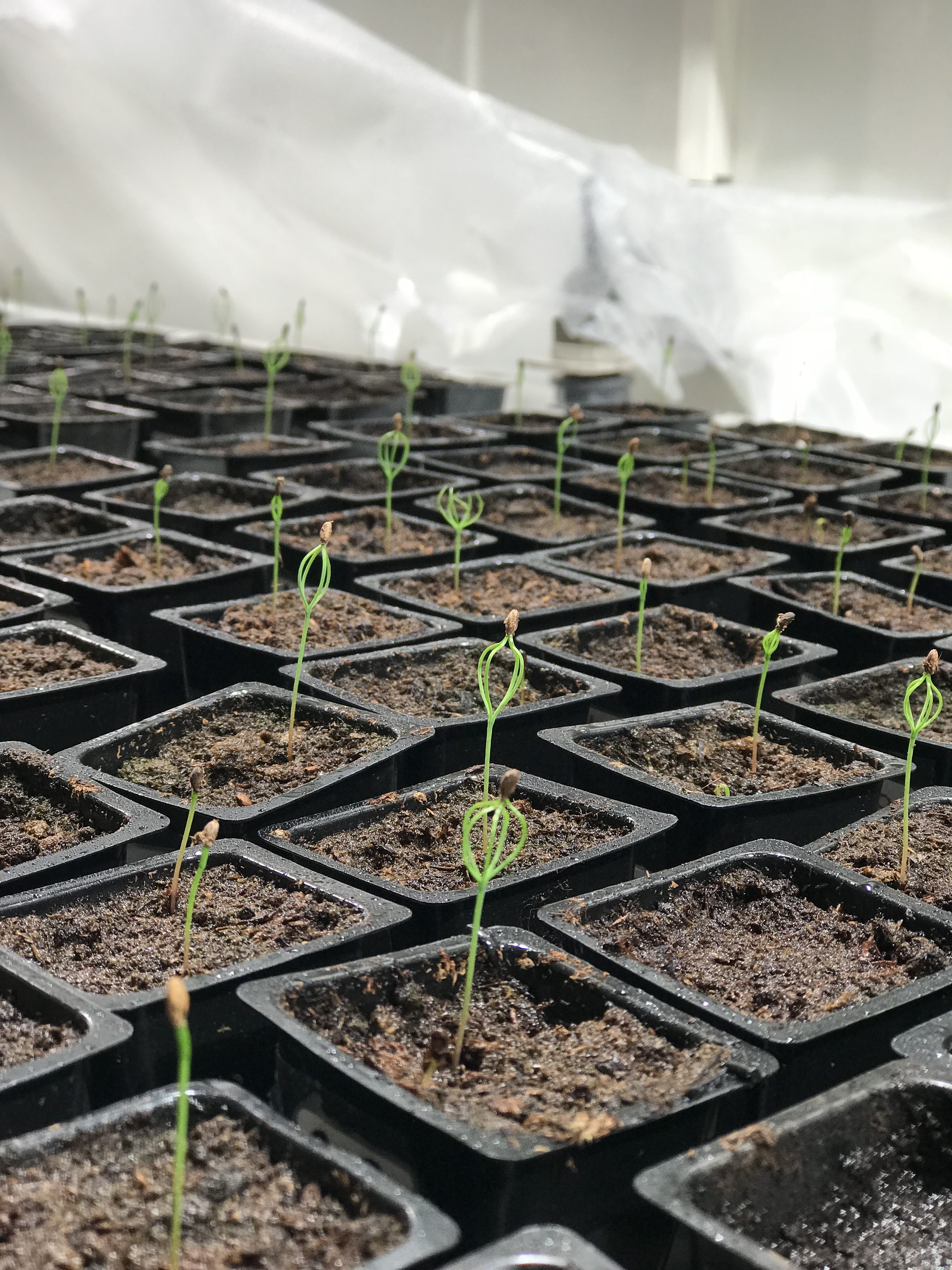The paper led by scientists of the Department of Engineering and Chemical Sciences, Karlstad University, was co-authored by Lutz Eckstein, professor of biology at the Department of Environmental and Life Sciences.

He writes about their work:
“Sweden has about 28 million hectares of forests, and pine trees constitute 40% of the total standing volume. Since the country is the world’s second largest exporter of pulp, paper and wood products, a total of 400 million containerized tree seedlings are produced by Swedish forest nurseries to restock forests each year. However, intensive annual forest harvests remove essential soil nutrients, which may cause problems for forest productivity.
In Sweden, container-grown seedlings are dominantly produced in peat and peat-based growth media. Peat-based substrates have many advantages such as long-term drainage ability, good aeration for tree seedling roots, good fertilizer absorbance and release capability. However, peat-based media are considered non-sustainable as their extraction have adverse environmental impacts. Therefore, sustainable approaches towards forest production and plantation management are urgently needed.
Therefore, the aim of this paper was to study the effects of hydrochar, derived from paper mill biosludge, on growth, quality, mycorrhizal associations and nutrient/heavy metal uptake of pine tree seedlings. We analyzed whether effects varied significantly between hydrochar forms (powder or pellets) or hydrochar proportions mixed with peat (10% or 20% hydrochar v/v). The effects of hydrochar addition on pine tree seedling was evaluated under three fertilization regimes (no fertilizer, 50% fertilizer and 100% fertilizer). We hypothesized that the growth, quality and mycorrhizal colonization of pine tree seedlings grown in substrate mixed with hydrochar would improve. We also expected pine tree seedlings grown with hydrochar to require less fertilizer to achieve similar or higher growth, mycorrhizal colonization and associated nutrient uptake relative to seedlings grown without hydrochar but with optimum rates of fertilizer (100% fertilizer). To our knowledge, this current study is the first paper to explore the potentials of hydrochar powder and pellets for being used as a growing media component in production of containerized pine tree seedlings.
Application of hydrochar had positive or neutral effects on shoot biomass and stem diameter compared with control seedlings (without hydrochar) under tested fertilizer levels. Analysis of the natural logarithmic response ratios (LnRR) of quality index and nutrient and heavy metal uptake revealed that application of 20% (v/v) hydrochar powder or pellet with 50% fertilizer resulted in same quality pine seedlings with similar heavy metal (Cu, Ni, Pb, Zn and Cr) and nutrient (P, K, Ca and Mg) contents as untreated seedlings supplied with 100% fertilizer. Colonization percentage by ectomycorrhizae significantly increased when either forms of hydrochar were applied at a rate of 20% under unfertilized condition. The results of this study implied that application of proper rates of hydrochar from biosludge with adjusted levels of liquid fertilizer may reduce fertilizer requirements in pine nurseries.”


